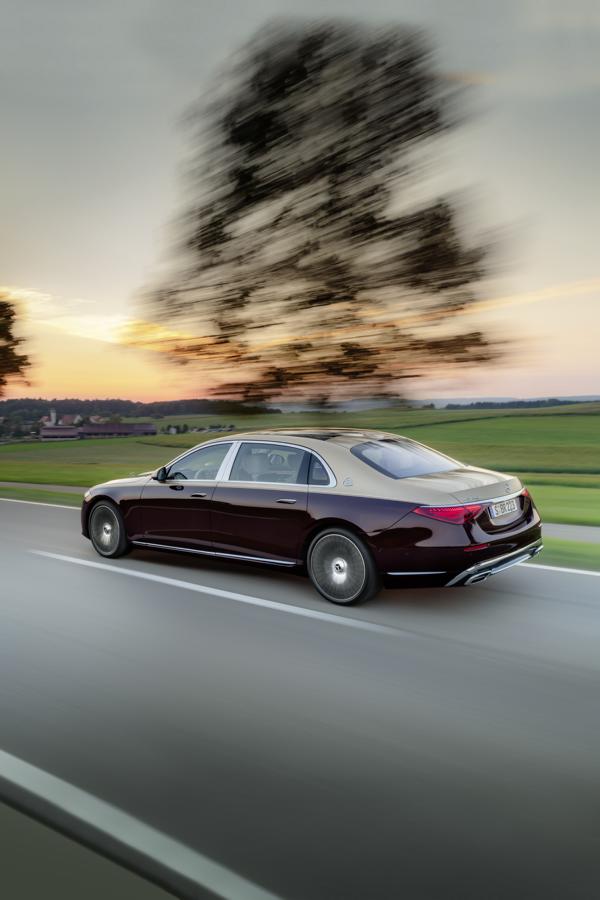Recently updated on December 20, 2022 at 11:28 am
Exceptionally quiet and low in vibration
The previous model was the quietest sedan in the world when it was launched in 2015. The new Mercedes-Maybach now offers even more noise comfort. The NVH behavior (noise, vibrations, harshness, noise, vibrations, roughness) was tested in the Technology Center for Acoustics and Vibration (TAS) in Sindelfingen and in the Test and Technology Center (PTZ) in Immendingen.
The new luxury sedan is based on the very good NVH base of the new S-Class generation. With it, too, the rigidity of the body is the foundation for the excellent noise and vibration comfort. Further S-Class details such as the double sealing of the openings in the cable grommets on the bulkhead, the large-scale bulkhead insulation and acoustic foams in selected shell profiles have been adopted.
The even more extensive NVH measures in the Mercedes-Maybach S-Class are aimed primarily at the rear. Additional insulating foam is used in the area of the rear wheel arch, as a new cavity was created there compared to the model brothers. The additional fixed triangular windows in the C-pillar were given thicker laminated glass, as they are in the immediate vicinity of the heads of the rear passengers.
On request, noise-optimized tires with foam absorbers are available for the Mercedes-Maybach. Foam on the inside of the running surfaces acts like a silencer and makes the interior even quieter. Thermal and noise-insulating as well as infrared reflective laminated safety glass are also available all around as special equipment. The additional films between the panes of the laminated safety glass reduce wind noise, among other things. In addition, they also keep noise reflected from crash barriers or noise from oncoming vehicles.
Active driving noise compensation is making its debut in the entire Daimler company. The system reduces unwanted, low-frequency noises with the help of anti-phase sound waves (see separate chapter).
The engineers from Mercedes-Benz test the vehicle acoustics in the Technology Center for Acoustics and Vibration (TAS) in Sindelfingen. For the first time, "Dasha", a development dummy that generates the noises to be measured itself, was used (Daimler sound source).
In the TAS, noises can be measured in various situations inside and outside the vehicle on various test stands and analyzed accordingly, here are a few examples:
- A non-contact, fully automatic vibration measurement takes place in a test laboratory. The vibrations on surfaces are scanned there with a laser and then visualized like a thermal imaging camera. For this purpose, three laser scanning heads are mounted on the arm of a robot that can be moved on linear axes. The (replacement) excitation of individual vehicle components takes place via a shaker. The system can measure individual components as well as complete vehicles. A crane is attached to the ceiling in the laboratory for this purpose.
- Microphone arrays with over 800 microphones connected in series are used in the exterior noise roller dynamometers. With their help, a drive past can be simulated despite the vehicle being stationary, regardless of the season and weather. At the same time, the sound sources can be analyzed. Wedge absorbers on the walls ensure that the room acoustics are as quiet as possible, very similar to a free field.
- High-frequency road excitations from all four vehicle wheels can be simulated on the acoustic and vibration comfort test bench. Designed as a so-called flat track test stand, it is closer to reality than a roller test stand with regard to the road contact of the tires. Uneven road surfaces are imitated by means of different stimuli from the wheels in vertical and horizontal directions: plate joints on motorways as well as rough asphalt.
- The rain noise test bench tests which noises different levels of precipitation produce, for example on the roof and windows. There are exactly 1.648 water jets under the high ceiling.
Through simulations and measurements in the TAS, the vehicle acousticians can already achieve a high degree of maturity before the test vehicles go to the test and technology center (PTZ) in Immendingen, among other places. The asphalt surface layer of the acoustic test track there has a coefficient of friction precisely defined in accordance with the ISO 362 and ISO 10844 standards. As a result, certification sound measurements can also be carried out there in addition to acoustic tests. There is space for microphones in bulges on the edge of the track.
(Article goes over several pages - page selection below)
 tuningblog.eu Your magazine about tuning the car
tuningblog.eu Your magazine about tuning the car

